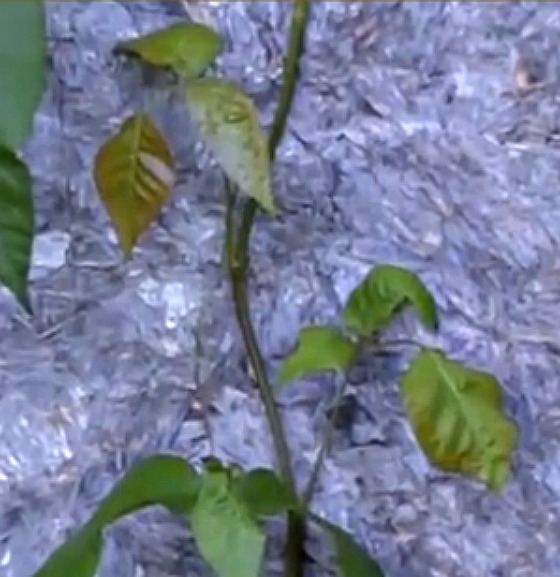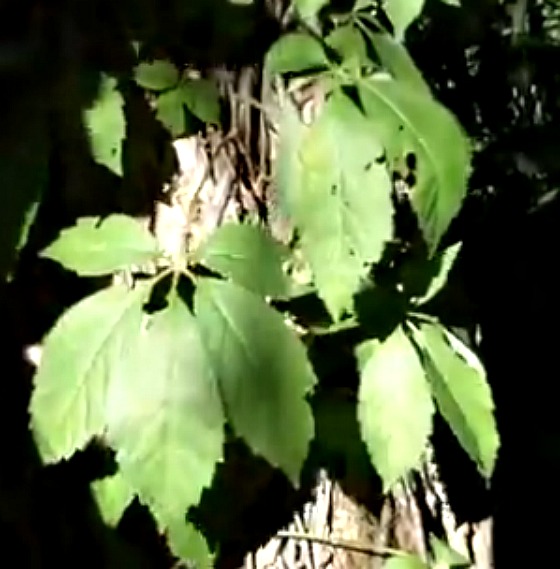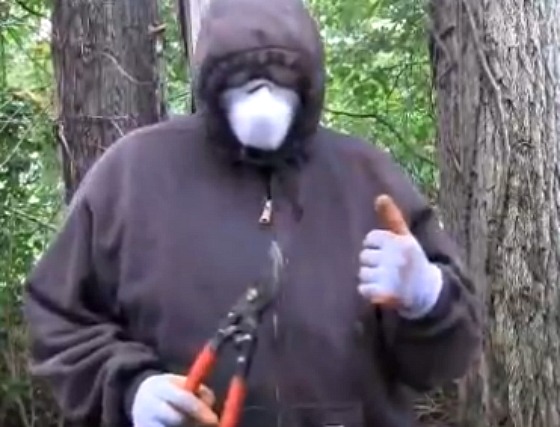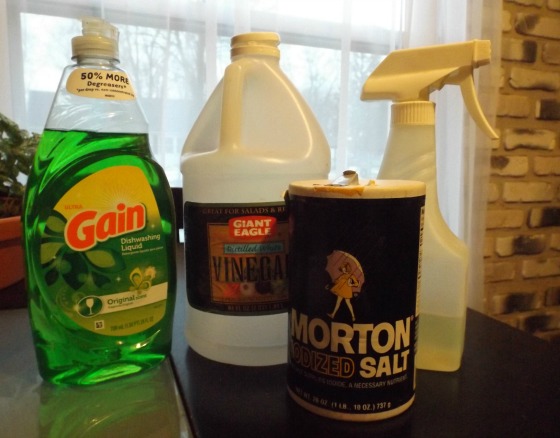| Online: | |
| Visits: | |
| Stories: |

| Story Views | |
| Now: | |
| Last Hour: | |
| Last 24 Hours: | |
| Total: | |
What Kills Poison Ivy?
It is estimated that almost 85% of people have some type of allergic reaction to poison ivy. Poison ivy contains a clear liquid called urushiol that is found in all parts of the plant. The urushiol is responsible for the itchy, blistering reaction that poison ivy is famous for. Some people have mild reactions and others are so sensitive that they will catch it without even touching it.
What ever your situation, there are ways of keeping this nasty vine under control. Before we discuss what kills poison ivy, let’s talk about how to identify it.
What Does Poison Ivy Look Like?
 Poison Ivy Growing on a Tree
Poison Ivy Growing on a Tree
Poison ivy can take on slightly different appearances. You’ll notice on the picture above that the leaves are slightly scalloped. On the picture below, the leaves appear to have smoother edges.
 These Poison Ivy Leaves Have Smooth Edges
These Poison Ivy Leaves Have Smooth Edges
Leaves grow in clusters of three. The topmost leaf has a small stem, but the two adjacent leaves below it do not. Poison ivy leaves tend to have a glossy appearance, but its not a rule. Color can range from green to reddish. They can get quite red in the fall.
 These Young Leaves Have a Reddish Tone
These Young Leaves Have a Reddish Tone
They grow on a vine, as a small bush or as small plant. They can trail up a tree on a hairy vine or blend in with other plants on the ground. Sometimes it can be tricky to identify these troublesome plants until its too late. They can produce a translucent white or cream colored berry that remains on the plant throughout winter and spring. Its best to follow the old saying:
Leaves of three, let them be.
Berries of white, run in fright.
 This Is Not Poison Ivy. Notice The 5 Leaves? It’s Virginia Creeper.
This Is Not Poison Ivy. Notice The 5 Leaves? It’s Virginia Creeper.
Okay, now that we know how to identify it, let’s get down to business. What kills poison ivy?
Go Gaga for Goats
Its a well known fact that goats will eat nearly anything. Goats will happily clear out patches of poison ivy without any itchy side effects. Don’t have a goat? Drinking goat’s milk is said to dramatically reduce your reaction to poison ivy. Science has proven that the urushiol contained in the plant does not transfer to the milk so there is no risk of catching poison ivy from drinking the milk. I have found no concrete evidence that goat’s milk will help your allergy, but many, many people swear it helps! Likewise, it is said that soap made from goat’s milk helps relieve itchy rashes.
Goats? Come On, Give Me Some Advice I Can Really Use!
Goats are awesome, but I don’t know of any goat-rental services. If you’re going to tackle this problem yourself, the first thing you need to do is protect yourself. Once again, the poisonous urushiol in poison ivy is in every part of the plant. You will need to wear gloves, long pants, long sleeves, etc. Armor yourself as much as you feel necessary. Mike is highly sensitive to poison ivy so he is careful to cover his face with a mask and his eyes with goggles.
 Mike, Armed For Battle
Mike, Armed For Battle
After tackling the ivy, be sure to wash your clothing right away. Wash your hands with soap in cool water. (Hot water opens your pores.) Shower with luke warm water. Wash your loppers or any other tools you used. The oils can remain active for over a year. Get ‘em off.
Pulling poison ivy out by hand can prove difficult. They have a strong, long root system. The roots can be over a yard or two long. Pulling out the entire root is hard. You’ll find that this method is often only a temporary fix. They almost always grow back. That being said, if you are going to pull them out by hand, the best time to do it is winter or early spring while the oil production is low. This is also the best time to cut any large vines growing up trees.
 Clipping a Poison Ivy Vine
Clipping a Poison Ivy Vine
The vines rely on the strong root system to keep them alive. If you cut them, anything above the cut will die.
After spring when your poison plant (hehe) has leafed out, you can spray the leaves with a systemic herbicide like Round-Up. These weed killers are absorbed through the leaves then enters the root system, killing the plant. Be careful to only spray the poison ivy leaves. You don’t want it absorbed into the leaves of plants that you want keep.
Many people think that by using it full strength, they are giving a heavier dose. This is not the case. Systemic herbicides are carried through the plant by the water in the mixture. If you don’t add water, it doesn’t work properly. Less poison is carried to the roots.
Don’t Want To Use Chemicals?
Not to worry! There are more natural alternatives for spraying leaves. Here is a simple recipe that you’ll love: Vinegar, salt and dish soap. That’s it!
 Kill Weeds With 3 Simple Ingredients
Kill Weeds With 3 Simple Ingredients
Start with a gallon of white vinegar. The “average” vinegar is 5% acidic and will work just fine, but if you can find one that’s 10% or 20% your mixture will be more potent. Pour the vinegar into a pot and heat it over the stove. Add 1 cup of salt and stir until the salt dissolves. Let it cool, then add 2 tablespoons of liquid dish soap.
Vinegar, when diluted with a gallon of water makes a good fertilizer for acid-loving plants like azaleas, rhododendrons and blueberries. When mixed full strength with salt, it works very much like Round-Up. The dish soap helps the mixture to stick to the leaves.
Pour the mixture into a spray bottle. Set the sprayer to stream (not mist) to for better control. Once again, be careful where you spray because it will damage any leaf that it hits.
Be Patient
Spraying your plants with a systemic herbicide or the vinegar mixture will not work overnight. After its absorbed into the leaves it takes time before it destroys the root system. Give it 2 weeks, then spray the plant again if necessary. It may take more than one application to do the job. Poison ivy is a tough plant with strong roots.
Disposal
Dead vines of poison ivy can still contain potent amounts of oil for quite some time. Wear gloves and wash up after moving them. It is best to bury it or if you have woods behind your house, you can pile it up where no person or pets will come in contact with it.
Do Not Burn It!!
Even dead poison ivy can contain urushiol that can be released through burning. Inhaling the smoke can inflame your lungs, bronchial tubes and nasal passages. It can get into your eyes. Its nasty stuff. Burning poison ivy was the inspiration behind the creation of mustard gas that was used in WWI. Please, please, please do not burn your poison ivy.
Here is what Mike has to say about getting rid of poison ivy.
Source: http://mikesbackyardnursery.com/2014/03/what-kills-poison-ivy/



